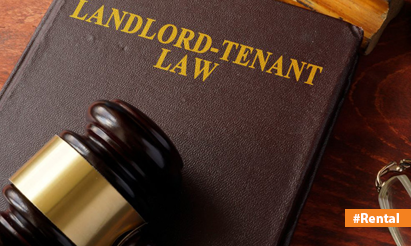Rent Agreements in India – Types, Required documents & registration process
Rent agreements in India are a vital aspect of the tenant-landlord relationship, governing the terms and conditions of renting a property. Understanding these agreements is crucial for both parties to ensure a smooth and lawful rental experience. In this guide, we delve deep into the intricacies of rent agreements in India, providing you with invaluable insights and practical advice.
What is Rent Agreement?
A rent agreement, or a rental agreement, is a legally binding document between a landlord and a tenant outlining the terms and conditions for renting a property. This agreement typically includes details such as the duration of the tenancy, rent amount, payment terms, security deposit, maintenance responsibilities, and rules regarding the use of the property. It protects both parties’ interests by clearly defining their rights and obligations, thereby minimizing potential disputes. In India, a rent agreement is usually executed for 11 months to avoid stringent rental laws. Unlike a lease agreement, which typically lasts longer and conveys more extensive rights to the tenant, a rent agreement is often for a shorter term and offers more flexibility. This distinction is crucial for landlords and tenants to understand to ensure they choose the appropriate type of agreement based on their needs.
Types of Rent Agreements in India
Understanding the various types of rent agreements in India is crucial for landlords and tenants. Each type of agreement caters to different needs and circumstances, providing flexibility and legal protection.
Types of Rental Agreements:
- Monthly Rental Agreement: Typically used for short-term rentals, this agreement is renewed monthly and allows both parties to terminate with short notice.
- Yearly Rental Agreement: Commonly for long-term rentals, this agreement is valid for a year, often including rent escalation and renewal terms.
- 11-Month Rental Agreement: Popular to avoid complex rental laws, this agreement lasts for 11 months and is often renewable upon mutual consent.
- Commercial Lease Agreement: Used for renting commercial properties, it includes specific terms related to business activities, maintenance, and responsibilities.
- Leave and License Agreement: More flexible than traditional rental agreements, the landlord can grant the tenant permission to use the property without transferring legal possession.
Terms Included in an Rent Agreement in India
A rent agreement in India includes several key terms defining the responsibilities and rights of the landlord and tenant. These terms ensure clarity and prevent disputes.
| Term | Description |
| Rent Amount | Specifies the monthly rent to be paid by the tenant. |
| Security Deposit | Details the amount of deposit paid, which is refundable at the end of the tenancy. |
| Lease Duration | Defines the period for which the property is rented. |
| Payment Terms | Includes the due date for rent payments and acceptable payment methods. |
| Maintenance Responsibilities | Outlines the maintenance duties of both landlord and tenant. |
| Notice Period | Specifies the notice period required for terminating the agreement. |
| Use of Property | Details any restrictions on the use of the property. |
| Renewal Terms | Describes the conditions under which the agreement can be renewed. |
These terms are crucial for both parties’ smooth and legally compliant rental experience.
Documents required for Rent Agreement registration in India
Registering a rent agreement in India involves submitting various documents to ensure legal compliance. These documents help verify the identities of the involved parties and the details of the property.
| Document | Description |
| Identity Proof (Landlord and Tenant) | Includes an Aadhaar card, PAN card, or passport for both parties. |
| Address Proof (Landlord and Tenant) | Utility bills, voter ID, or passport showing current address. |
| Property Documents | Title deed or proof of ownership of the property being rented. |
| Rent Agreement Draft | The prepared rent agreement detailing terms and conditions. |
| Photographs | Passport-sized photographs of both landlord and tenant. |
| Stamp Paper | Stamp paper of the appropriate value for the agreement. |
| Proof of Payment | Receipt of payment for registration fees. |
Legal Requirements
It’s essential to ensure that your rent agreement complies with legal requirements to avoid any disputes or legal repercussions. Some key legal aspects to consider include:
Stamp Duty and Registration
Certain states in India mandate the registration of rent agreements and payment of stamp duty. It’s crucial to verify the applicable laws in your state and fulfill the necessary documentation to make your agreement legally enforceable.
Tenant Rights and Responsibilities
Tenants have certain rights protected by law, including the right to a habitable dwelling and privacy. It’s essential for tenants to understand their responsibilities, such as paying rent on time and maintaining the property in good condition.
Key Components included in a Rent Agreement
A rent agreement encompasses several essential components that define the terms and conditions of the rental arrangement. These components ensure clarity and protect the interests of both the landlord and the tenant.
| Component | Description |
| Parties Involved | Names and details of the landlord and tenant. |
| Property Description | Address and description of the rental property. |
| Term of Tenancy | Duration of the rental period. |
| Rent Amount | Monthly rent to be paid by the tenant. |
| Security Deposit | Amount of deposit and terms of its return. |
| Maintenance Responsibilities | Duties related to property upkeep and repairs. |
| Notice Period | Time required for either party to terminate the agreement. |
| Additional Clauses | Any other specific terms, such as pet policies or subletting. |
A rent agreement typically includes essential details such as:
- Names of Parties: Identifying the landlord and tenant involved in the agreement.
- Property Details: Description of the rented property, including its address and specifications.
- Rent Amount: Clearly stating the monthly rent payable by the tenant.
- Duration: Specifying the duration of the tenancy, whether it’s a fixed-term lease or a month-to-month arrangement.
- Security Deposit: Mentioning the amount of security deposit collected by the landlord and the conditions for its refund.
- Maintenance Responsibilities: Outlining who is responsible for property maintenance and repairs.
How to make Rent Agreement in India
Creating a rent agreement in India involves a few straightforward steps to ensure legal compliance and protection for both parties. Here’s the step-by-step registration process:
Step-by-Step Registration Process:
- Draft the Agreement:
- Prepare a detailed agreement with all essential terms and conditions, including rent amount, deposit, duration, and responsibilities.
- Choose Stamp Paper:
- Select stamp paper of appropriate value based on the rent amount and state regulations.
- Sign the Agreement:
- Both landlord and tenant sign the agreement in the presence of two witnesses.
- Visit Sub-Registrar Office:
- Both parties visit the local sub-registrar’s office along with the signed agreement and necessary documents.
- Submit Documents:
- Submit identity proof, address proof, property documents, and the rent agreement draft.
- Pay Registration Fee:
- Pay the registration fee per state laws.
- Register Agreement:
- The sub-registrar verifies the documents and registers the agreement, making it legally binding.
Stamp Duty charges on Rent Agreement
Stamp duty charges on a rent agreement in India vary depending on the duration and rent amount. The stamp duty is typically calculated as a percentage of the annual rent plus a security deposit. For agreements up to 11 months, the stamp duty is relatively lower, around 1% of the total rent. For longer durations, the charges may increase. These charges are mandatory and must be paid to validate the agreement legally. The exact rates can vary by state, so checking local regulations for precise amounts is important.
How to write a Rent Agreement?
To write a rent agreement, follow these steps:
- Title and Date: Start with the title “Rent Agreement” and the creation date.
- Parties Involved: Include full names and addresses of the landlord and tenant.
- Property Details: Describe the rental property and its address.
- Rent and Deposit: Specify the monthly rent amount, due date, and security deposit.
- Term of Tenancy: State the duration of the agreement.
- Responsibilities: Outline maintenance duties and other obligations.
- Signatures: Both parties sign the document in the presence of witnesses.
Ensure the agreement is clear and covers all necessary legal aspects.
Conclusion
Understanding and executing a rent agreement is crucial for a legally sound rental process. Landlords and tenants can ensure clear and enforceable terms by following proper steps to draft, register, and pay necessary stamp duty. This meticulous approach helps prevent disputes and fosters a harmonious rental relationship.
FAQs
What is a Rent Agreement?
A rent agreement is a legally binding document between a landlord and a tenant that outlines the terms and conditions of renting a property, including rent amount, duration, and responsibilities.
Who prepares a rent agreement?
Typically, a rent agreement is prepared by the landlord or a legal professional. Both parties should review and agree on the terms before signing.
What is the significance of a rental agreement?
A rental agreement protects both landlord and tenant by clearly defining the terms of the rental arrangement, preventing disputes, and ensuring legal compliance.
Is police verification required for a rent agreement in Delhi?
Yes, police verification is often required for rent agreements in Delhi to ensure the safety and legal compliance of the rental arrangement.
What is the difference between a rent agreement and a registered agreement?
A rent agreement is a basic contract, while a registered agreement is legally recognized and recorded with the sub-registrar, providing stronger legal protection.
What is the Difference Between a Lease and a License Agreement?
A lease agreement grants the tenant exclusive possession of the property for a fixed term, whereas a license agreement provides mere permission to occupy the premises for a specified period.
Do Rent Agreements Need to be Registered?
In some states, rent agreements exceeding a certain duration must be registered to be legally valid. It’s advisable to check the specific requirements of your state.
Can Rent Agreements be Terminated Early?
Yes, but the process varies depending on the terms specified in the agreement. Generally, early termination may incur penalties or forfeiture of the security deposit.
Who is Responsible for Repairs and Maintenance in a Rental Property?
The maintenance responsibilities are typically outlined in the rent agreement. Generally, landlords are responsible for structural repairs, while tenants are accountable for day-to-day maintenance.
What Happens if Either Party Violates the Terms of the Rent Agreement?
Violation of the rent agreement can lead to legal consequences such as eviction or compensation claims. It’s crucial for both parties to adhere to the agreed-upon terms to avoid disputes.
Is Subletting Permitted Under Rent Agreements in India?
Subletting is subject to the terms specified in the rent agreement. In most cases, subletting requires prior written consent from the landlord.
Disclaimer: The views expressed above are for informational purposes only based on industry reports and related news stories. PropertyPistol does not guarantee the accuracy, completeness, or reliability of the information and shall not be held responsible for any action taken based on the published information.




